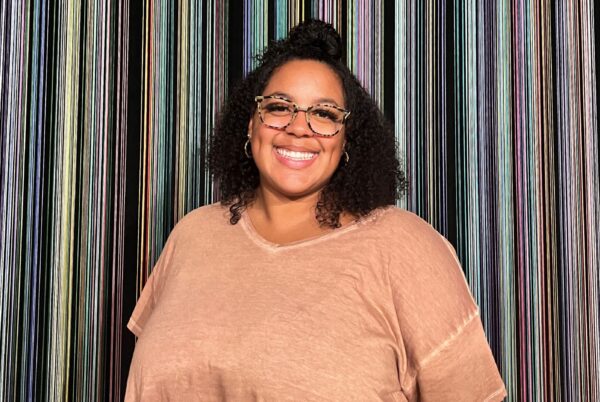By Paulina Cachero
Sarah Pfefferle had already saved $16,000 for her future home by the time she was 18. Then she started using buy-now, pay-later products and “ruined everything.”
In just two months, the Chicago native racked up $5,000 in debt across three of the installment-loan firms. The ballooning balances, alongside unexpected medical costs, drained much of her savings and prompted her to seek help from a financial adviser. But the damage was done: Pfefferle’s credit score dropped to 580 from 720 after she closed her accounts.

Pfefferle, now 21, said her plan to buy a house has been set back at least two years. And she fears she won’t be able to get a mortgage.
“I have little to no money saved for emergencies,” she said. “It’s a vicious cycle.”
Pfefferle is hardly alone. Australian firm Afterpay Ltd. popularized the concept of buy now, pay later as a new spin on layaway plans with an instant-gratification twist. The financial products typically let consumers pay for purchases in four installments with the promise of little to no fees, no interest and quick credit approvals.
Read more: Buy Now, Pay Later Industry Is About to Meet Its First Big Test
That enticed young consumers with little credit history, who saw BNPL as an alternative to credit cards for the TikTok generation. The pioneering firms, including Afterpay, Klarna Bank AB and Affirm Holdings Inc., launched with hip clothing retailers, struck brand deals with social media influencers and quickly became ubiquitous on apps and online checkouts. They make most of their money by charging merchants a fee each time a consumer uses the product at checkout.
The short-term loans surged in popularity during the pandemic thanks to consumers who were flush with extra cash and limited to shopping online. Five major BNPL companies originated 180 million loans totaling $24.2 billion in 2021, a near tenfold increase from 2019, according to a report from the Consumer Financial Protection Bureau.
The promise of interest-free payments made BNPL products particularly attractive to credit card-wary Gen Z, who in many cases grew up watching loved ones struggle during the financial crisis. However, BNPL is “only free when you follow all the rules,” said Ed Mierzwinski, a senior director of the US Public Interest Research Group.
The BNPL firms have been plagued by delinquency this year as inflation bites. The CFPB found that younger borrowers are more likely to have loans in “derogatory status,” meaning they’re either in default or sent to a third-party debt collector. Roughly 11% of borrowers paid at least one late fee in 2021, an increase from the prior year. And 18% of consumers aged 18 to 29 fell behind on payments in 2021, according to a Federal Reserve report.
These days, young TikTok users joke about dodging payments or accruing balances they can’t pay off.
“The marketing here is counting on a younger, perhaps less financially sophisticated spender because they haven’t been in the financial marketplace as long,” Mierzwinski said.
In emailed statements, Afterpay — now owned by digital payments company Block Inc. — Klarna and Affirm all said they provide more consumer safeguards than credit cards and emphasized that they don’t charge interest and either don’t charge late fees or cap them.
New to Money
For Gabrielle, who asked that her last name be withheld, it didn’t feel like she was spending money because her BNPL payments weren’t due for weeks. And the more she spent, the more credit she got. More than a year later, the 19-year-old was left with a heap of new clothes, makeup and $3,500 in debt with balances across several BNPL apps — a common borrower practice called “loan stacking,” which the CFPB cited as a risk to consumers.
She was eventually able to pay off her balances in April after seeking help on a Reddit forum where many users said BNPL apps fueled their shopping addictions.
A poll for the Financial Technology Association found 40% of BNPL users borrowed from multiple providers. And nearly a third reported spending “more than they would have if BNPL hadn’t been available,” according to the Financial Health Network.
Long-Term Consequences
For some, falling behind on BNPL payments could have long-lasting consequences.
Briana Gordley, 24, said she didn’t understand the hidden pitfalls of BNPL when she first encountered an Afterpay ad at the clothing retailer Forever 21 in 2016. Paying her own way through college and rejected by credit card providers, the then-freshman believed the financial offering was a safe way to pay for things she couldn’t afford with her part-time job.
Just 18 months later, the Texas native had spent $1,500 across three platforms, and three of her loans had been sent to collections. She was forced to turn to her parents for help. And even then, it took her two years to finally build a savings account and start paying down her student loans.
While Gordley’s late payments didn’t impact her credit score, that may not be the case for borrowers in the future. Major credit bureaus like Equifax Inc. and Experian Plc have said they’ll start including BNPL purchases on consumers’ credit reports, although not all lenders are reporting data to them yet. Loans sent to debt collectors can also be reported, which can hurt consumers’ credit scores.
Gordley told the Senate Banking Committee in September that BNPL targets younger borrowers who are just learning how to manage their own finances, and said the products verge on being “predatory” without strong disclosures and consumer protections.
“I understand and believe in personal accountability and responsibility for the choices I made,” Gordley said during a listening session hosted by the committee. “But accountability and responsibility should be a two-way street between consumers and businesses.”
More stories like this are available on bloomberg.com




